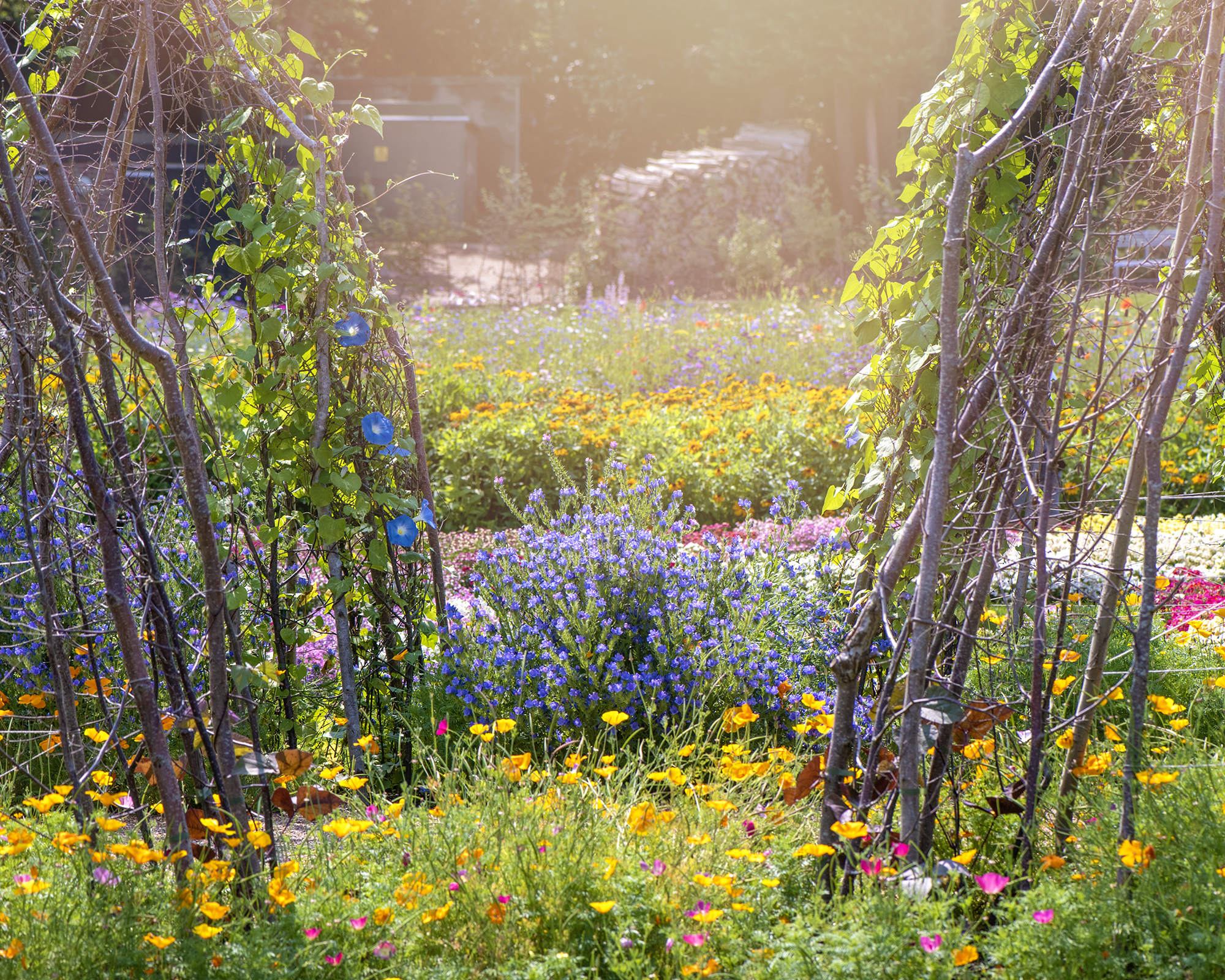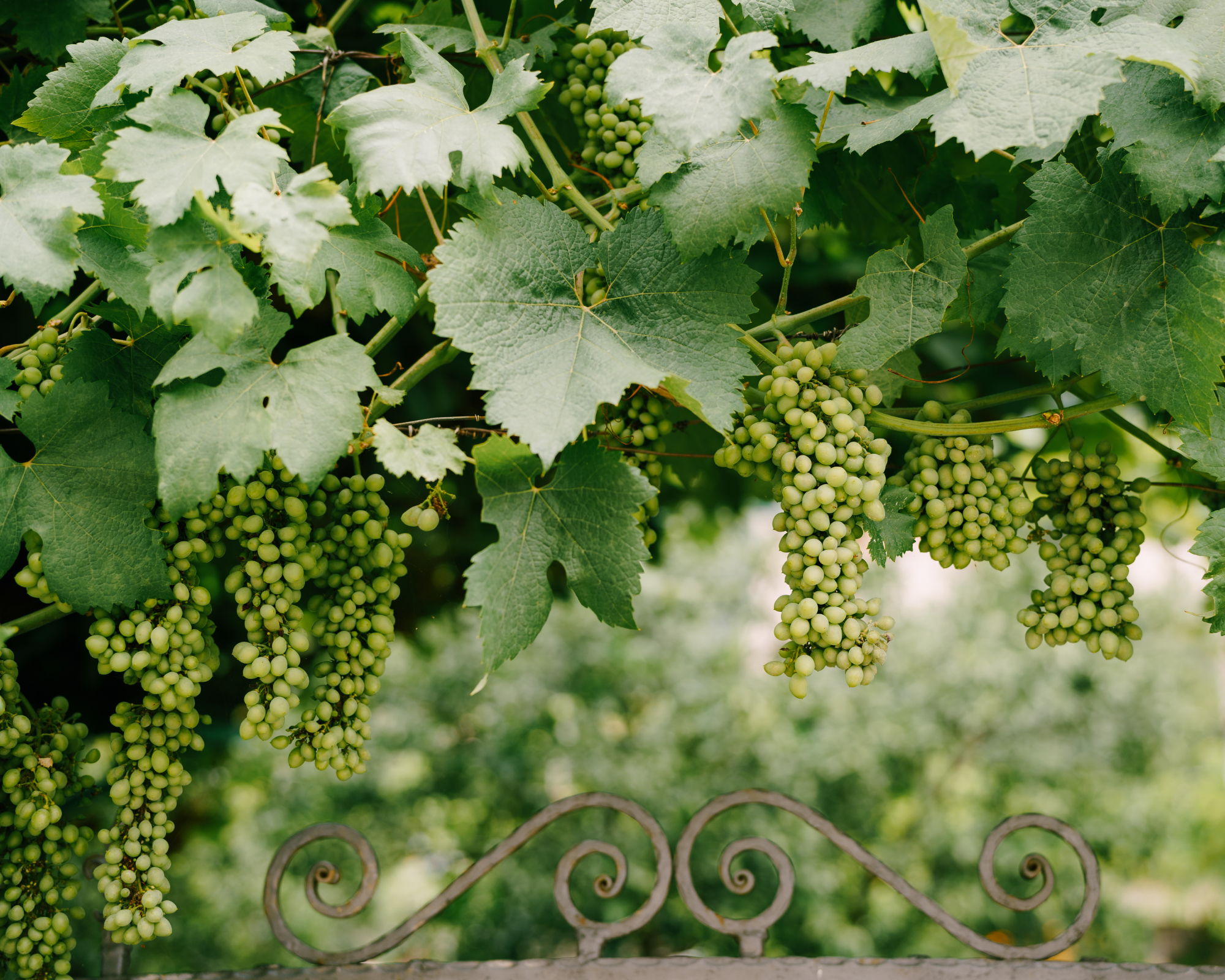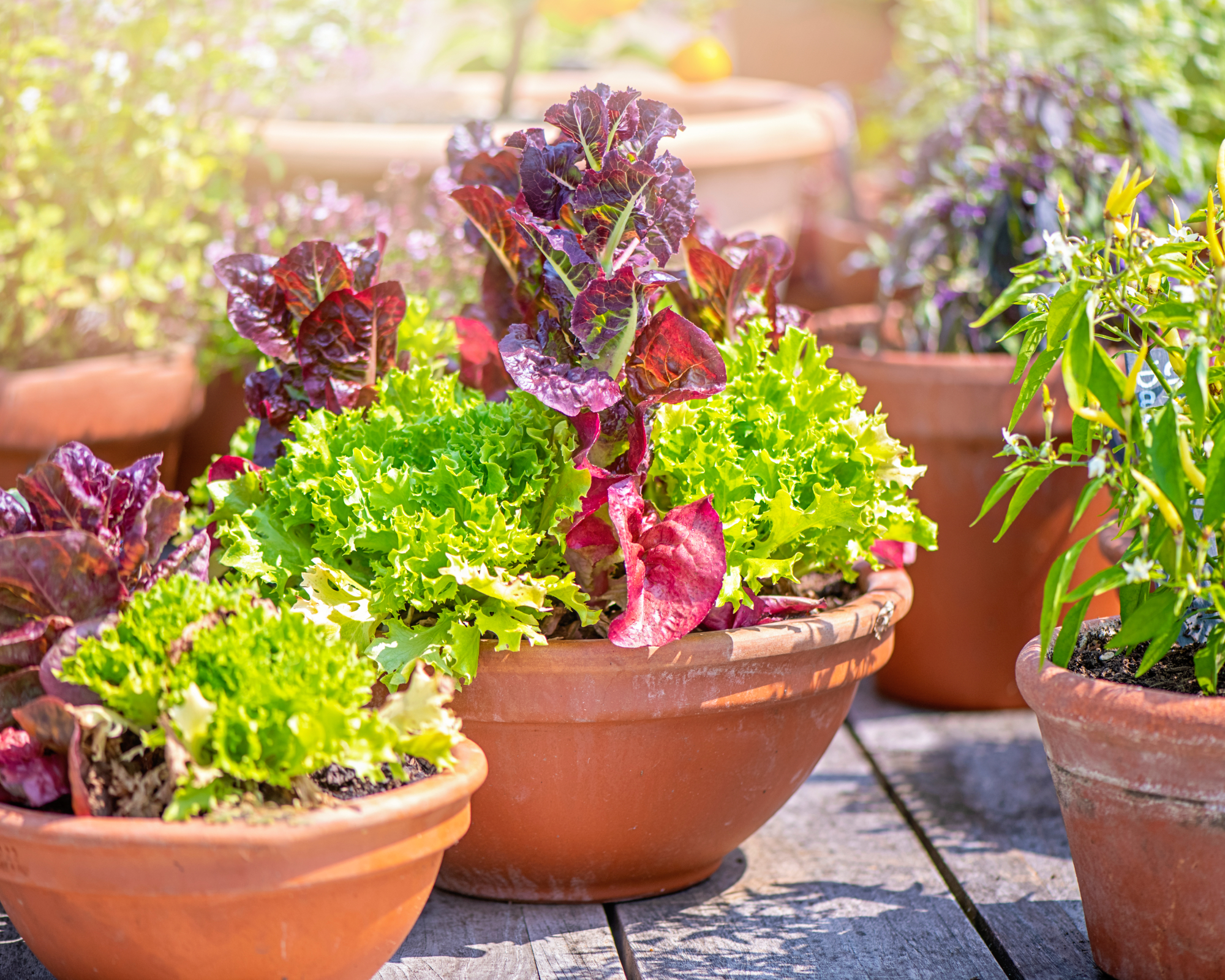
My current garden could be described as one of those edible landscapes that became all the rage around the time of Covid and even some years before, but my interest in edible landscapes, nominal as it started, dates back some 25 years.
Part of my life path saw me as a chef, so it was a natural progression to include edible landscape plants. It started with the usual suspects: herbs. While they were used for cooking, of course, many of the most beautiful herbs were allowed to bloom, and the resulting flowers were used as food decor – i.e. garnishes. Thyme, oregano, sage, chives, and, of course, lavender were all showstoppers in the garden and in the professional kitchen.
Fast forward a dozen years. I was no longer cooking professionally, and my newfound extra time found me grubbing in the garden more. I still cooked at home, though for family and friends, but when I felt like it, not on demand.

My Edible Landscape Design
Thus, my edible garden expanded. In fact, edible landscaping became kind of a “thing” for me. I wasn’t rabid about it, but I did love to incorporate my homegrown foods into my menus. Along with the herbs, I had strawberry fields tucked into the semi-shaded area along the garage. At the end of the rows, I had a stately artichoke. Yes, we ate them, but I always left a few on the plant because both I and the bees enjoyed the shockingly purple/blue blooms.
I must confess that I didn’t exactly have a plan. Just some random and sometimes disjointed edible landscaping ideas. I love plants of all shapes and sizes, but my other particular interest was blooming perennials, so I decided, why not combine the two?
So that’s what I did. The rhubarb, chives, raspberries, goji berry, and apple tree are now partners in crime with some succulents (another weakness of mine), native perennials, and spring bulbs. The pear tree is adjacent to the actual perennial garden – a blend of blooming native and hybrid perennials.
The privacy vines I've planted to cover up the basically see-through cyclone fencing form a backdrop and living trellis for the raised beds filled with onions, garlic, tomatoes, squash, peppers, beans, peas, and more.
Sign up for the Gardening Know How newsletter today and receive a free copy of our e-book "How to Grow Delicious Tomatoes".
Oh, and then there’s the grape vine. Another brilliant idea born out of necessity to cover the ugly fencing. It coexists with three huge peony bushes at the forefront of the vine.

Edible Landscaping Ideas
Over the course of all these years of playing around with edible plants, I’ve still yet to come up with an actual design. And while there have been successes and failures, at this juncture I do have some advice.
- Make it look pretty. Why not? There are some absolutely gorgeous edible varieties out there that combine beautifully with existing landscaping plants. For instance, I opted for a Jerusalem sage rather than a typical green sage, which, although pretty, does not have the huge velvety soft leaves and vibrant yellow stalks of flowers the Jerusalem sage has. Plus, it combines beautifully with two miscanthus grasses, some succulents (cause you can never have too many), and a gorgeous heliopsis in an overly hot rocky area.
- Layer up. I believe there can never be too many plants. Position your taller plants to the rear, edible or not, and fill in towards the front of a bed. If you have a bed that can be viewed from all sides, the taller plants like fennel should go in the center of the bed and graduate in size as you radiate outwards. Another bonus? If the bed is filled with plants you want, there will be no room for plants you don’t want – weeds.
- Consider compatibility. Make sure all the plants you combine have similar requirements. Do not expect a shade-loving plant to coexist with sun worshippers. The same goes with water, soil, and nutrient requirements. If you're not sure what kind of soil you have, then use a soil test kit, such as this top-rated My Soil kit from Amazon, to check what you're working with.
- Give them some space. In the spring, the garden looks a bit embarrassed, all half-clothed with barely any green, but as things begin to grow, allow it room to grow. There’s a reason for spacing between plants. You don’t want them to compete for light, air, water, and nutrients. Crowded plants are also more likely to become diseased.
- Trees. The one thing I did plan when I bought my current house was to get some trees. There weren’t any – horror! OK, there was a cherry tree. All yards need height. It gives the landscape so much more visual interest. We opted for a multi-grafted apple and pear tree, along with a grafted dappled willow (the Dr. Seuss of trees) and a paperbark maple. These form the cornerstone of our garden around which we “planned” (not really) the rest of the edible garden.

Edible Container Gardens
Containers are an opportunity to combine an edible plant with a perennial, and perhaps an edible annual or two. Go for texture and height differences. Remember to use like-minded plants that enjoy the same light, water, soil, and food needs.
The other bonus to container gardening is that you can plant things that might not ordinarily grow in your landscape due to your hardiness zone. Think olive or Meyer lemon tree. Then, before Old Man Winter arrives, bring them into the house to overwinter in style. For containers you can't move inside, consider using a plant blanket to make a floating row cover, such as this one from Amazon.
Container gardens are perfect for those with little to no garden space. There is so much you can do with a small space. The above advice goes for potted edible gardens as well as in-ground gardens.
For the prettiest containers, always select a tall plant, a filler, and then a thriller, which would be an exciting blooming or texturally interesting trailing plant.
Experiment. Try growing ginger if you’ve always wanted to. Love peppers? There are hundreds of varieties. Yes, you can grow potatoes in a container. The only limit is your imagination, so enjoy!

Amy Grant has been gardening for 30 years and writing for 15. A professional chef and caterer, Amy's area of expertise is culinary gardening.
